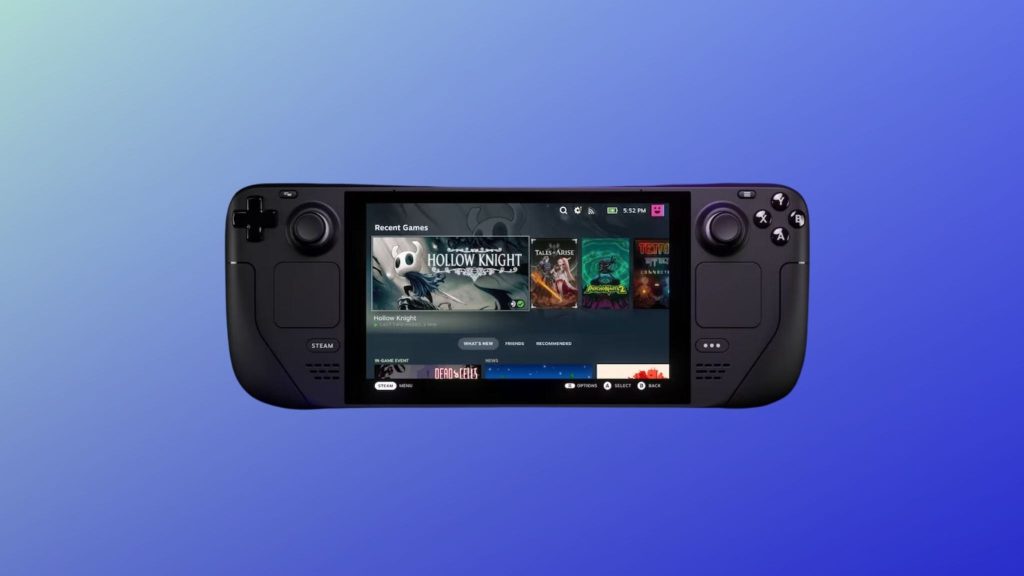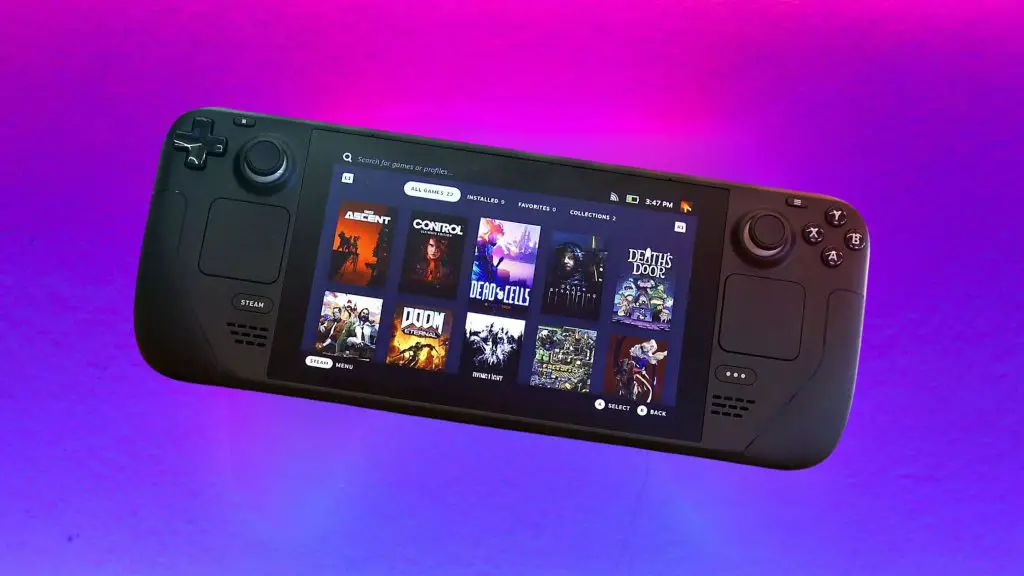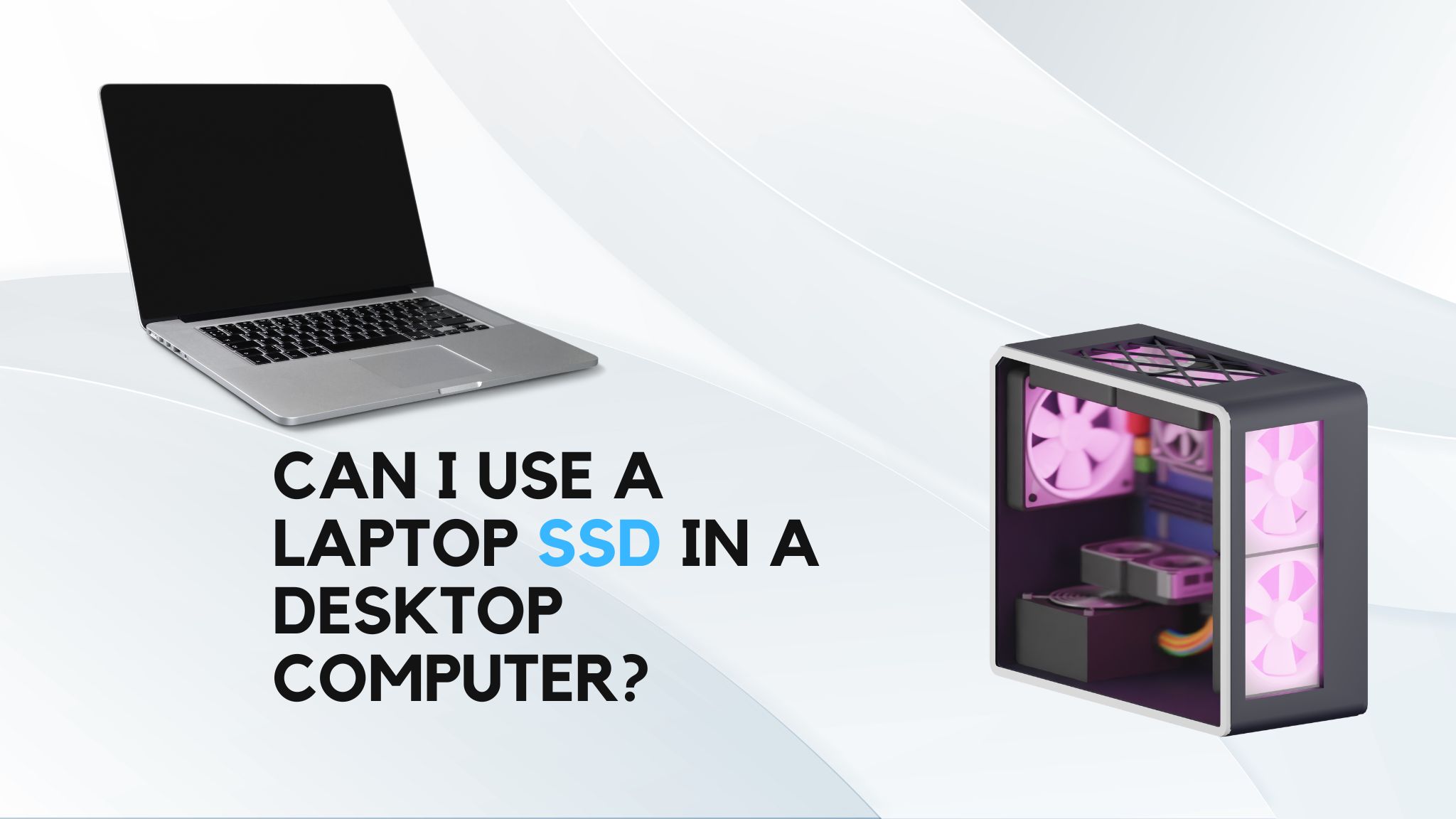A year ago, Valve set out on an ambitious mission to change the game industry. The Steam Deck, their eagerly awaited invention, promised to put the PC gaming universe in the hands of players. Pioneers of the PC gaming industry, Valve’s venture into portable gaming was met with enthusiasm and high expectations.
The Steam Deck distinguished itself with its unique approach. Unlike its predecessors, it embraced Valve’s own distribution of Arch Linux, allowing for a highly customizable gaming experience. This choice opened up a world of opportunities and allowed players to completely customize and alter their gameplay experience. Additionally, by bridging the gap between Linux and Windows games, the Proton compatibility layer provided access to a sizable selection of games.What truly captivated gamers was the remarkable ability to play graphically intensive and visually stunning games on a small handheld screen. Titles like God of War, Uncharted 4, and Red Dead Redemption 2 became immersive pocket-sized adventures. It was a feat that left many gamers feeling awe-inspired by the Steam Deck’s capabilities.
However, as time passed, it became evident that not all games seamlessly adapted to the Steam Deck’s unique setup. Compatibility issues and performance challenges began to surface. These issues sparked concerns about the device’s long-term appeal. So, one year down the line, does the Steam Deck still hold its value? The answer lies in your gaming aspirations.
Should you get the most expensive steam deck?
If you consider yourself a game freak why not? For gaming enthusiasts who relish the freedom to tinker, experiment with settings, and revel in the novelty of playing high-end games on the go, the Steam Deck remains an enticing proposition. Valve’s unwavering commitment to enhancing compatibility and performance through regular software updates suggests that the Steam Deck will only get better with time. The thriving Steam community serves as a valuable resource for support and workarounds, should you encounter any hurdles.
Conversely, if you seek a plug-and-play gaming experience that demands no troubleshooting or compromises, the Steam Deck may not align with your preferences. Console gamers who appreciate simplicity and a seamless gaming encounter might find the learning curve and occasional compatibility quirks less appealing.
Furthermore, the landscape of handheld gaming is ever-evolving. Rival companies may step into the arena with their own innovative devices, potentially offering different features and experiences. This competition could usher in further advancements and refinements in the realm of handheld gaming. Consequently, it’s wise to remain vigilant for upcoming releases before making a purchasing decision.
In summary, the Steam Deck has undeniably elevated the world of PC gaming, providing a distinctive and flexible gaming experience. For gamers who value personalization, mobility, and the opportunity to plunge into their favorite PC games while on the go, it is still a wise investment a year after its launch. It’s important to understand that it doesn’t accommodate everyone, though.Prospective buyers should carefully contemplate their gaming preferences and expectations before embracing the world of handheld PC gaming. As the industry continues to evolve, it presents an exciting time for gamers, with the Steam Deck serving as just one of many thrilling options on the horizon.
Most Indie games
Indie gaming has emerged as a dynamic realm teeming with creativity, constantly pushing boundaries and delivering compelling narratives. For those who harbor a deep affection for indie titles, the Steam Deck emerges as the ultimate companion.
The Steam Deck seamlessly accommodates a plethora of indie gems, spanning a wide range of genres and styles. Titles like Hollow Knight, Celeste, Noita, Rain World, Vampire Survivors, Hades, Binding of Isaac, Undertale, Baba is You, Rivals of Aether, and many more flourish on this portable gaming marvel. Even the latest indie releases, such as Wandering Sword, Dust & Neon, Chained Echoes, Lunistice, and Cult of the Lamb, find a comfortable home on the Steam Deck.

While it’s true that most indie games run flawlessly on the Steam Deck, it’s important to acknowledge that a handful may encounter minor hiccups or require some optimization. For instance, Eldest Souls runs smoothly but truly shines with the added benefits of Proton GE for optimal video functionality. Similarly, titles like Gunfire Reborn may need specific launch options to ensure a smooth gaming experience. Although there exist a few exceptions, such as Kerbal Space Program 2 or Outer Wilds, which demand more extensive optimization efforts, these instances remain rare when compared to the vast array of indie games that perform exceptionally well on the Deck. In essence, the Steam Deck stands tall as an undisputed powerhouse for indie gaming enthusiasts.
In summary, one year since its initial launch, the Steam Deck continues to validate its worth, offering an extraordinary gaming experience tailored for connoisseurs of older classics and lovers of indie games alike. Valve’s unwavering dedication to enhancing compatibility and performance assures users that the device will only improve with time. Nevertheless, the ultimate choice rests on your gaming inclinations—whether you yearn for the freedom to revisit timeless classics or immerse yourself in the vibrant tapestry of indie gaming. As the handheld gaming sector evolves, the Steam Deck remains an alluring option, standing alongside a multitude of exhilarating possibilities on the horizon.
AAA Games and the Steam Deck: A Compatibility Exploration
In recent times, the gaming community has been buzzing with excitement as several newer AAA titles have been striving to earn that illustrious “Verified” checkmark, signifying their compatibility with the Steam Deck. Prominent titles, such as Octopath Traveler 2, Like a Dragon: Ishin!, and the highly-anticipated Dead Space remake, have made significant efforts to secure this validation. However, the journey to achieving this verification is far from straightforward.
While some AAA games seem to effortlessly adapt to the Steam Deck’s hardware, as seen with Octopath Traveler 2, others demand more meticulous configuration and a willingness to make certain compromises. Consider Uncharted 4, for instance, which proudly boasts the Verified label, implying a seamless experience upon booting it up on the Deck. Reality is somewhat intricate. Gamers are required to activate FSR 2, ensure that the TDP limit is configured to 8 (to avoid excessive battery usage), and set the graphics settings to high, albeit with a frame rate limit of 30 FPS. These modifications are crucial for optimizing the game’s performance while maintaining a balance to prevent excessive drain on your Deck’s battery and the risk of overheating.
Some AAA titles require even more comprehensive adjustments to run smoothly, such as Horizon Zero Dawn or Dying Light 2. While these games can indeed be enjoyed on the Steam Deck, it underscores the platform’s adaptability, allowing players to fine-tune settings to accommodate resource-intensive titles.
However, not all AAA games can be salvaged in their current states. There are those, like Wild Hearts, that remain stubbornly incompatible despite concerted efforts to address issues. Others are plagued by stuttering problems that disrupt gameplay, exemplified by titles like Hogwarts Legacy or Returnal. This trend of mixed performance in newer AAA releases highlights the ongoing challenge of achieving seamless compatibility with the Steam Deck’s unique hardware. There is a learning curve for both game developers and players as they try to optimize their games for this cutting-edge portable platform.
In conclusion, the Steam Deck’s compatibility with AAA titles presents an intriguing puzzle. While the Verified checkmark implies a game’s intention to perform well on the Deck, the actual experience often necessitates intricate adjustments and concessions. Some titles may require extensive configuration, while others may pose challenges or remain unplayable due to technical constraints. As the Steam Deck continues to carve its place in the gaming landscape, developers face the challenge of delivering seamless experiences for this unique platform. Gamers, in turn, must adapt to this evolving ecosystem, embracing the possibilities and potential obstacles that come with portable PC gaming. As the future unfolds, we eagerly anticipate enhancements and innovations that will shape the Steam Deck’s compatibility with AAA titles.
Steam Deck accessibility
The Steam Deck boasts a standout feature: the seamless transition between gaming mode and a conventional desktop interface. This desktop mode transforms the device into a fully operational computer, empowering users to surf the web, stream movies, and install software for various purposes. Valve’s inclusion of this versatile feature elevates the Steam Deck’s appeal.
it’s important to understand that using a mouse and keyboard to use this desktop interface is much more practical. You’ll need a docking station with USB connections or a Bluetooth mouse and keyboard to accomplish this. While this setup proves advantageous for home use, providing a comfortable workspace for productivity, it presents logistical challenges for those on the move. Carrying additional accessories like a mouse and keyboard, not to mention the docking station, may require investing in a bag or backpack to accommodate these components.
Moreover, the inconvenience escalates if you happen to forget your docking station, rendering your keyboard and mouse useless if they rely on wired or USB dongle connections. While some, like myself, may not mind the added bulk of these accessories when venturing outside, it could pose a significant hurdle for others, particularly those intending to utilize the Steam Deck for productivity tasks. In comparison, the Steam Deck’s multiple components remain more manageable than a hefty laptop, but it’s essential to consider the potential inconveniences when adopting this versatile device.
In summary, the Steam Deck’s desktop mode enhances its functionality and adaptability, yet it introduces the need for extra accessories when used on the go.While this could just be a small annoyance for some, it might prove to be a crucial consideration for others. Nevertheless, it’s important to note that the Steam Deck’s adaptability—which provides a powerful computing experience in a portable and small form—remains a vital advantage despite the additional requirements.
Unleashing Boundless Gaming Freedom
The Steam Deck, a compact portable powerhouse, encapsulates impressive capabilities within its diminutive frame. Is it a marvel of engineering? Absolutely. Does it require concessions to deliver smooth gaming experiences? Undoubtedly. These concessions, however, are a game-specific necessity.

These compromises range from adjusting resolutions and utilizing FSR for upscaling (which can result in slightly sharpened visuals), dialing back frame rates to conserve battery life and ensure game stability, or tweaking graphic settings. Not every game will hit a consistent 60 FPS, and some may not even manage a stable 30 FPS. If you’re unwilling to make these trade-offs for the sake of playing your favorite titles on the Steam Deck, it might not be the ideal choice for you.
One of the most significant concessions revolves around battery life. Depending on the game and your playstyle, the Steam Deck’s battery life can feel woefully short. Larger, more demanding games, even with optimizations, might grant you only 2.5 to 3 hours of gameplay. However, it’s crucial to bear in mind that these AAA titles weren’t originally designed for play on a device like the Steam Deck. Consider that, and suddenly, those few hours of gaming on the go become a significant triumph.
Embracing the Steam Deck means entering a realm where gaming experiences once thought impossible on a portable device become a reality. Yet, for some, the prospect of compromising on graphical fidelity or a consistent 60 FPS is a non-starter. And that’s perfectly fine; gaming offers the freedom to pick and choose experiences that suit your preferences. Nevertheless, it’s essential to recognize that the Steam Deck may not deliver the level of performance some enthusiasts seek.
Exploring the Latest AAA Marvels
Despite notable advancements in optimization and upscaling technologies, there’s a concerning trend emerging where certain new game releases struggle to perform adequately on the Steam Deck. I’ve previously mentioned titles like Wild Hearts and Returnal as prime examples of this issue. These games carried the hope of being playable on the Deck in a portable format, but even with the optimizations and upscaling attempts, they couldn’t deliver the expected performance.
It’s essential to recognize that this isn’t a blanket statement applying to all new AAA releases. Some new titles arrive without being overly resource-intensive, performing smoothly on the Steam Deck—Octopath Traveler 2 being a prime example. Moreover, there are games that exhibit exceptional optimization, making them playable and enjoyable on the Deck, as exemplified by Like a Dragon: Ishin!.
Additionally, it’s worth noting that sometimes, a few days after release, patches or shared shader cache updates may significantly enhance a game’s performance on the Steam Deck. However, expecting the latest AAA games to seamlessly run on the Steam Deck might lead to dashed hopes and disappointment.
Despite notable advancements in optimization and upscaling technologies, there’s a concerning trend emerging where certain new game releases struggle to perform adequately on the Steam Deck. I’ve previously mentioned titles like Wild Hearts and Returnal as prime examples of this issue. These games carried the hope of being playable on the Deck in a portable format, but even with the optimizations and upscaling attempts, they couldn’t deliver the expected performance.
It’s essential to recognize that this isn’t a blanket statement applying to all new AAA releases. Some new titles arrive without being overly resource-intensive, performing smoothly on the Steam Deck—Octopath Traveler 2 being a prime example. Moreover, there are games that exhibit exceptional optimization, making them playable and enjoyable on the Deck, as exemplified by Like a Dragon: Ishin!.
Additionally, it’s worth noting that sometimes, a few days after release, patches or shared shader cache updates may significantly enhance a game’s performance on the Steam Deck. However, expecting the latest AAA games to seamlessly run on the Steam Deck might lead to dashed hopes and disappointment.




